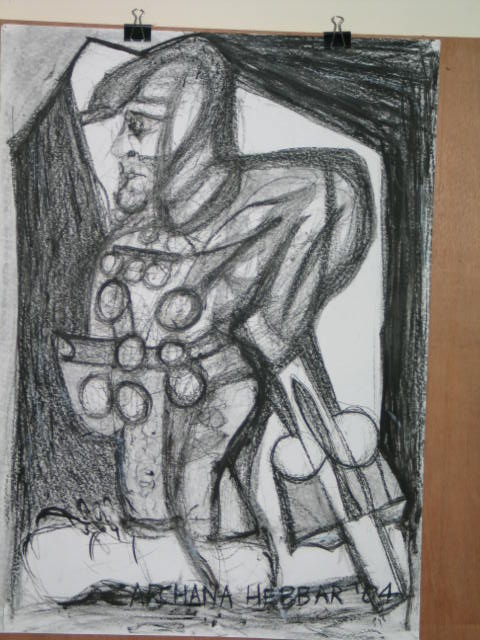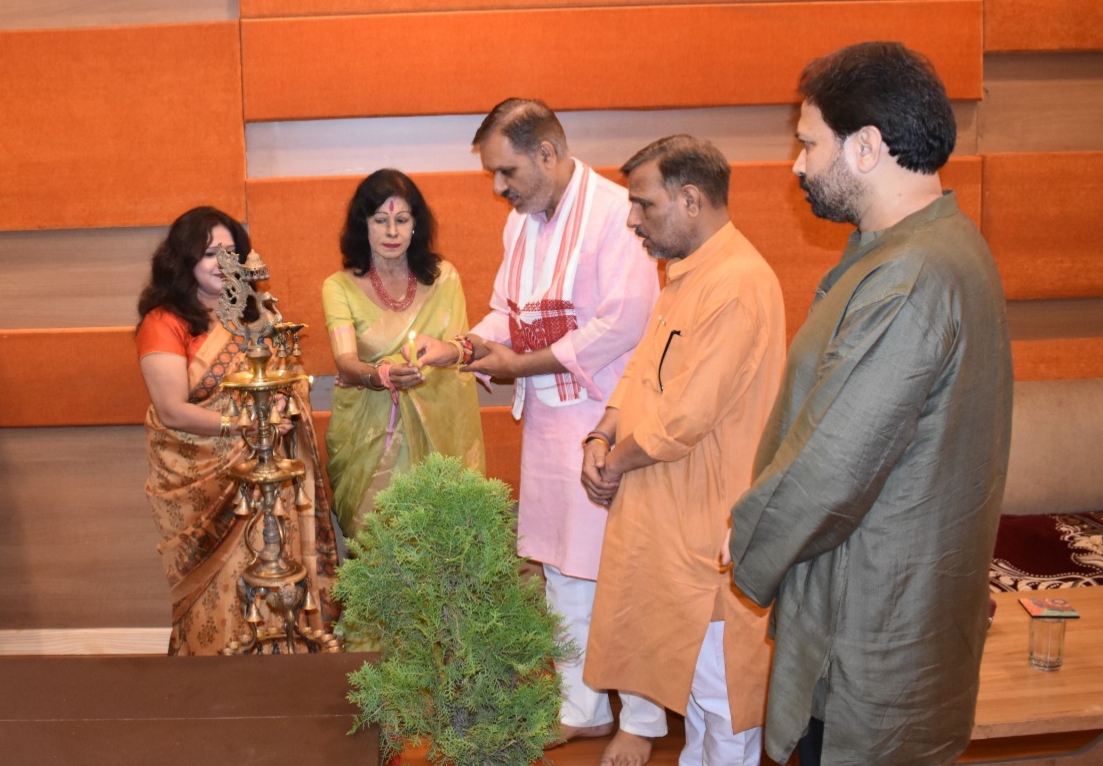The General having crossed a Torii boundary/Archana Hebbar Colquhoun

The trajectory of my art practice takes on a zigzag path sometimes; and at other times a circuitous one or a U-turn that I didn’t expect to take.
The work “The General” is one such. I started off with figure sculptures and then went on to study life drawing at Boston University.
After returning to Tokyo, where I started my art practice, instead of going forward on the path of figurative works, I veered off into abstraction and minimalist expression – the Torii gateway being the most significant of them all.
Once I had done a body of work using that very simple form of a Torii as a sculpture, as drawings, in installations etc. using a range of medium and materials, I yet again changed direction and returned to figure drawing.
Here is an example of a drawing that came to me after a not very straightforward journey.
The Torii form is only alluded to in this work. Why the image of a General though?
The Context
One of the most magnificent set of Toriis in Japan is in the heart of Tokyo, all of those Toriis leading to the famous Yasukuni Jinja (a Shinto Shrine) founded by the Meiji emperor in June 1869. The shrine commemorates the death of Japanese soldiers and members of public in a number of wars starting from the civil war also known as the Japanese Revolution of the late 1860s through to the First Indo-China war.
The shrine also commemorates over a thousand convicted Japanese war criminals from World War II.
In any war, whether you consider the dead soldiers as war heroes or war criminals there is always a General. It is this figure of a General that is depicted in the drawing.
The Torii represents a boundary. Wars are waged to gain control over territories that lie beyond a nation’s boundary.
For more information on the Yasukuni Jinja follow the Wikipedia link provided below.










Marvelous article,,, though I have not studied art,, I love it and practice it. Few years back,, probably thirty years, I accidentally found a book at Nai Sadak Delhi,, being sold as Raddi,, I purchased it at 100/- Rs. Price,, the book has enormous information about nude paintings of world renowned artists,, having paintings and description on glazed paper,,, title is The Body,,, in my opinion the book has something to do with history of nude paintings too,, I loved your article, 🙏🙏🌹
It’s really wonderful, thought provoking, touching the heart deep inside 💠